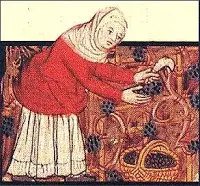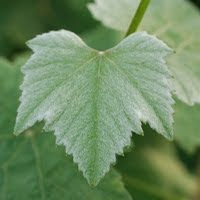The press have reported that the  first commercially-produced wine from grapes ripened in Scotland is to be launched, if there is enough sunshine.
first commercially-produced wine from grapes ripened in Scotland is to be launched, if there is enough sunshine.
Hotelier Pete Gottgens is setting up Scotland’s first vineyard on the banks of Loch Tay and plans to sell his wine at his Ardeonaig Hotel.
Gottgens will produce a white dessert wine and was inspired by the dessert wines produced in countries such as Canada and Sweden.
Scientists have predicted that global warming will create a more favourable climate for making wine in Britain, including Scotland.
Wine has even been produced in the Outer Hebrides on the Isle of Lewis (albeit from grapes grown inside poly tunnels) but never previously on a commercial scale north of the Border.
The problem for grape growing this far north is that grapes need 100 days to ripen.
There are already 416 vineyards in England and 2,732 acres of vines under cultivation, an increase of 45% in the past four years.
In the Domesday Book (1085-6) the most northerly place in which vineyards are recorded is Ely in Cambridgeshire but nowadays there are vineyards in the northern counties such as Ryedale Vineyards, north east of the City of York, Leventhorpe Winery in Leeds, Mount Pleasant in Lancashire and Whitworth Hall Vineyard in Durham.
The Domesday Book records vineyards in 42 definite locations and interestingly enough only 12 of the Domesday vineyards were attached to monasteries. Most belonged to nobles and were undoubtedly cultivated to provide them wi th wine for their dining tables and altars.
th wine for their dining tables and altars.
There is hot debate as to whether Roman vineyards in Britain stretched as far north as Hadrian’s Wall but we can lay claim to an indigenous grape variety of our own that could have been grown in Roman times.
The Wrotham Pinot is an English variety with white hairs on the upper surface of the leaves, and is particularly resistant to disease. Local lore has it that this vine was descended from vines brought over by the Romans.
The grapevine leaves are distinctly grey-green and from a distance the new leaves look as if they had a coating of white dust or flour over them. Locals gave the vine a nickname “the dusty miller’ as it reminded them of mill workers after a long day milling flour.
Edward Hyams of Oxted Viticultural Research Station made an experime ntal Blanc de Noir from this grape and in 1980 Richard Peterson took cuttings to California, where he now makes a pink sparkling Wrotham Pinot.
ntal Blanc de Noir from this grape and in 1980 Richard Peterson took cuttings to California, where he now makes a pink sparkling Wrotham Pinot.
Professor Richard Selley, of Imperial College London, who studies the effects of geology and climate change on viticulture, has said that Scotland could be a leading wine producer within 70 years. Food for thought isn’t it?

